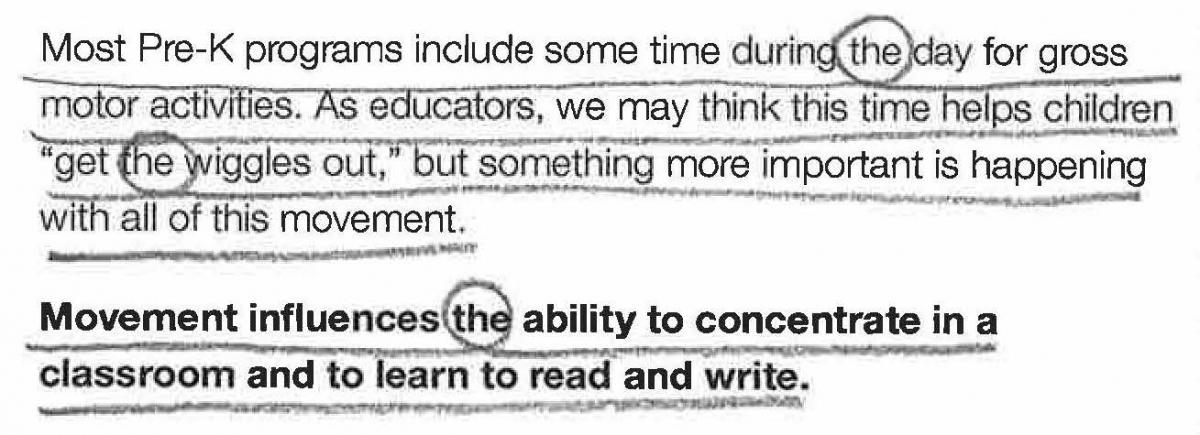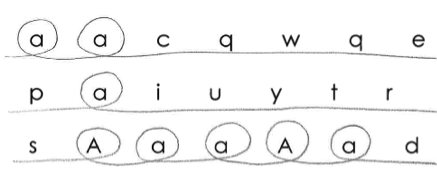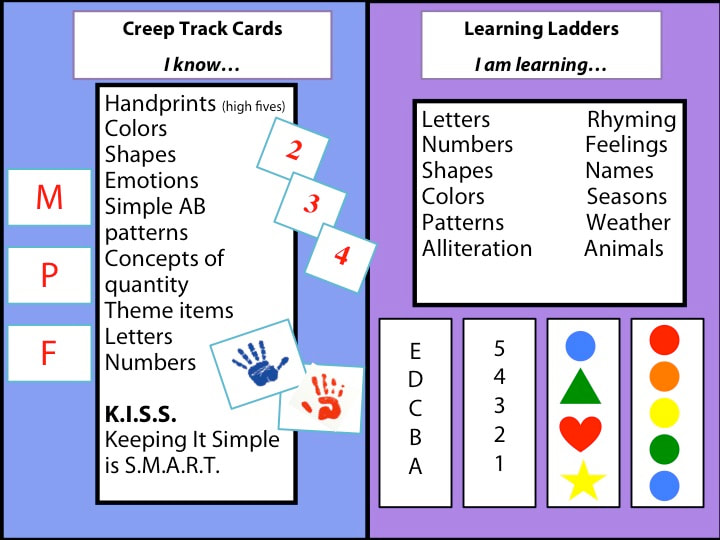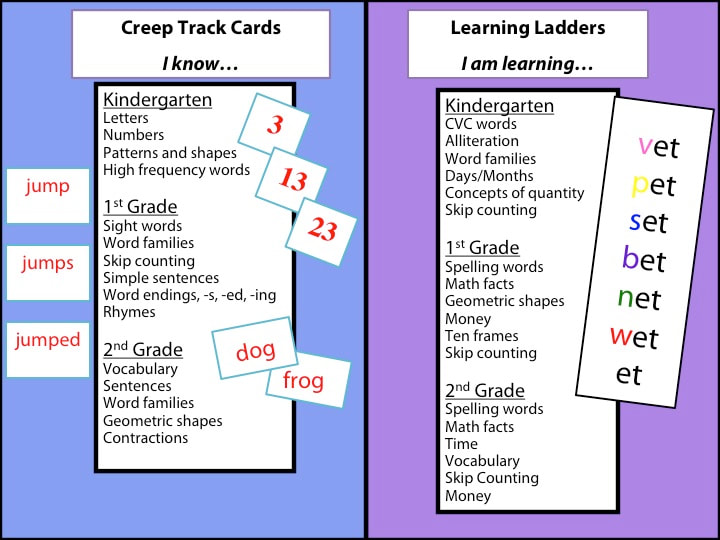|
S.M.A.R.T. Spaces Do you have centers or small group activities as a part of your daily schedule? Have you considered creating a S.M.A.R.T. center? Michelle, kindergarten teacher in La Crosse, WI, uses center time in her kindergarten schedule to fit in Basic Vision and a S.M.A.R.T. course of nine activities. While the rest of the class is divided up into groups doing a writing activity, fine motor games, choral reading, etc, a group of 4-5 children do a circuit of S.M.A.R.T. activities. Michelle has carefully chosen core floor activities for her students to do 2-3 times a day. Students are creeping, crawling, rolling, balancing, and hopping. After completing the movement activities, the group gathers together with Michelle. The lights go out and Basic Vision coupled with phonics instruction begins. Make sure you check out the video clips below.
Michelle is having her students review a key reading concept while providing brain stimulation through the visual system. Basic Vision stimulates the pupillary reflex and encourages focusing and visualization.
S.M.A.R.T. at Home Let’s face it, sight word practice can be boring with a capital B! We’re here to help you think beyond flashcards and provide an idea to use at home where identifying sight words can be fun and S.M.A.R.T. Loop de Loos are one of our most popular vision activities. They can be done at home and they don’t take a lot of time or resources. You can use newspaper articles, magazines, old homework assignments, etc., some type of printed material. Have your child draw a continuous line under each row of text, circling a specific letter or sight word. The example below shows the word “the” being identified in a text. Why are sight words so important? Sight words are the most common words in the English written language. 100 sight words make up over 50% of all the words we read! When students can read sight words quickly and accurately, it positively affects their reading fluency. It also builds their joy of reading. For children who are not yet reading words, you can use this same concept for identifying letters as shown below. How can siblings do this activity together? Using newspaper or magazines, you can challenge your older child to draw a continuous line under each row, circling each letter in alphabetical order while your younger child fills in all of the circular letters on the printed page. Both “games” are training the visual system in saccadic eye movements build a solid visual foundation vital for good reading! Time Saving Tips Can I incorporate S.M.A.R.T. into academics? We love seamlessly combining the two as long as the academic content does not hinder the automaticity of the movement. For example, putting the week’s spelling words in the Creep Track would likely cause many children to stop mid-movement to read the words. Stopping the movement stops the stimulation the brain is receiving from the movement. In the Slap/Creep Track, we ask that you place review material only in the pockets. The movement will be smooth and efficient while working on solidifying basic concepts. Where can S.M.A.R.T. be added to my current curriculum? Learning Ladders! Are you taking advantage of this activity to teach new concepts that you want students to have automatic recall of? Remember, movement anchors learning! Making Learning Ladders is pretty simple. Fold a sheet of construction paper or poster board in half vertically. The strip should be about 4-5 inches wide. Vertically print content on the strip. For early childhood, we recommend 4-6 items on a Learning Ladder. For Kindergarten and up, no more than 10 items on the strip, please. Reference your Program Guides for more detail. The second step is to pair a movement with the Learning Ladder of information. Students can jump while reading the information, toss/catch an object, bounce a ball, Cross Pattern, use a Rebounder, etc. If learning how to skip count by 3’s, students can toss a beanbag in the air while reading each number. 3 – 6 – 9 – 12 – 15 – 18 and so on. The ideas are endless for Learning Ladders. We know educators are creative in their use. Refer to the list below as a springboard of ideas for your classroom. Happy moving and learning! Reference: S.M.A.R.T. Curriculum Guide pages 246-247 S.M.A.R.T. Pre-K CORE Program Guide pages 108-109 Have some SMART ideas? We would love to hear from you! That's One S.M.A.R.T. Teacher! When you combine S.M.A.R.T. activities with curriculum goals you are one S.M.A.R.T. teacher! Paring S.M.A.R.T. and the Handwriting Without Tears curriculum used by her school, Michelle from La Crosse, WI, encourages her kindergarteners to say the HWT strokes as they trace sight words for Tactile Trackers.
As you watch the following video clip showing this clever use of a Tactile Tracker to input sight word recognition and spelling, pay attention to how many inputs of the word his brain receives.
References: S.M.A.R.T. Pre-K CORE Program Guide pages 64-65 S.M.A.R.T. Curriculum Guide pages 148-150
0 Comments
Leave a Reply. |
AuthorSCheryl Smythe Archives
May 2024
|






 RSS Feed
RSS Feed